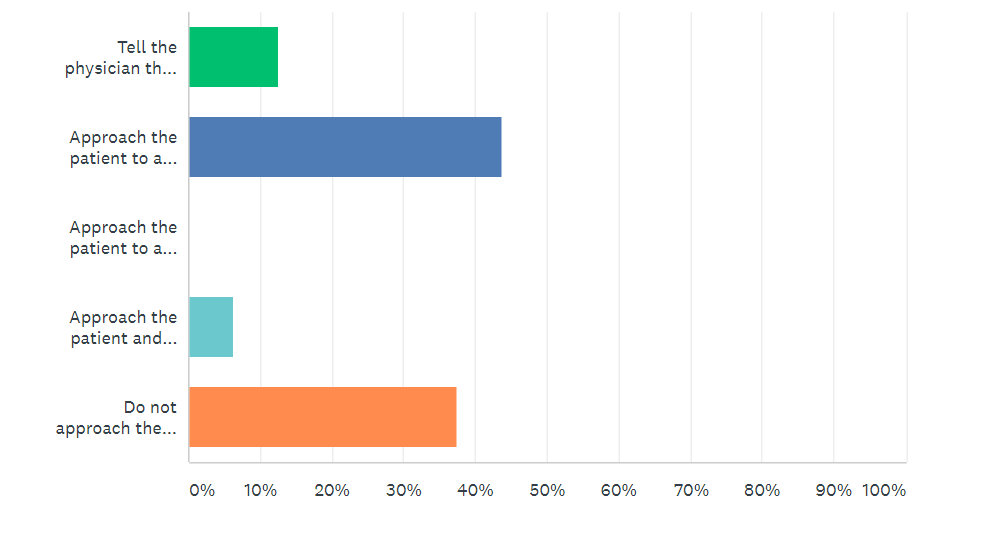November Response
Our last ethics question concerned discrimination against a practicing Muslim physician and the role of hospital administrators in enforcing zero-tolerance discrimination policies:
You are an administrator at a community hospital. As you are walking to the cafeteria, a young physician approaches you. She looks concerned. She says that she recently encountered discrimination at the hospital. The physician states that a patient told her he wanted to see a different physician because he didn’t like her “head scarf.” The physician is a practicing Muslim and abides by hospital dress code, which specifically allows religious garb. The hospital has a zero tolerance discrimination policy that does not allow for discrimination based on religion, gender, sexual preference, or any other personal status. The physician says that one of her colleagues agreed to cover the patient, but that she felt very uncomfortable and hurt by the situation. As a hospital administrator, what is the best course of action?
- Approach the patient to ask his reasoning for his physician change request. If he admits to disliking the physician’s hijab, inform him that there is a no tolerance policy on discrimination and that he cannot request a physician change due to religious reason.
- Approach the patient to ask his reasoning for his physician change request. If he admits to disliking the physician’s hijab, tell him that you will ensure that he has a new physician, as he shouldn’t feel uncomfortable with his care.
- Approach the patient and inform him that he must transfer hospitals because he violated the no tolerance discrimination policy
- Do not approach the patient but arrange an all-staff meeting to discuss the zero tolerance policy and appropriate responses. Ensure that all staff members are informed of the policy and understand their role.

Most respondents chose option 2 where they would first approach the patient to determine the reason for their request, and if true discrimination is confirmed, then they would enforce the zero-tolerance policy. Coming in at a close second is option 5 where an all-staff meeting will be held to discuss the policy, and the patient will not be approached.
January Question
During your shift as an attending in the emergency department, emergency transport arrives with an unconscious man who appears to be in his 60s. He was found down on a sidewalk with no known family or friends nearby, and he is not carrying any identification. As he is being placed on the monitor, the team notices that he has a large tattoo stating “Do Not Resuscitate” across his chest. Soon after, he converts to ventricular tachycardia. What do you do?
Tell us what you think!
Sophie Sun is a medical student at The University of Arizona College of Medicine – Phoenix, class of 2018. She completed her undergraduate degree at UC Berkeley and earned a PhD in chemical biology from The Scripps Research Institute, where she focused on unnatural amino acid incorporation and antibody engineering. Some of her current academic interests include student-run free clinics, vaccine compliance, and accountability in research. However, she might sound more excited when talking to you about classic American cinema, urban compost collection, and French dessert recipes. She is currently pursuing a career as a Med-Peds physician.

